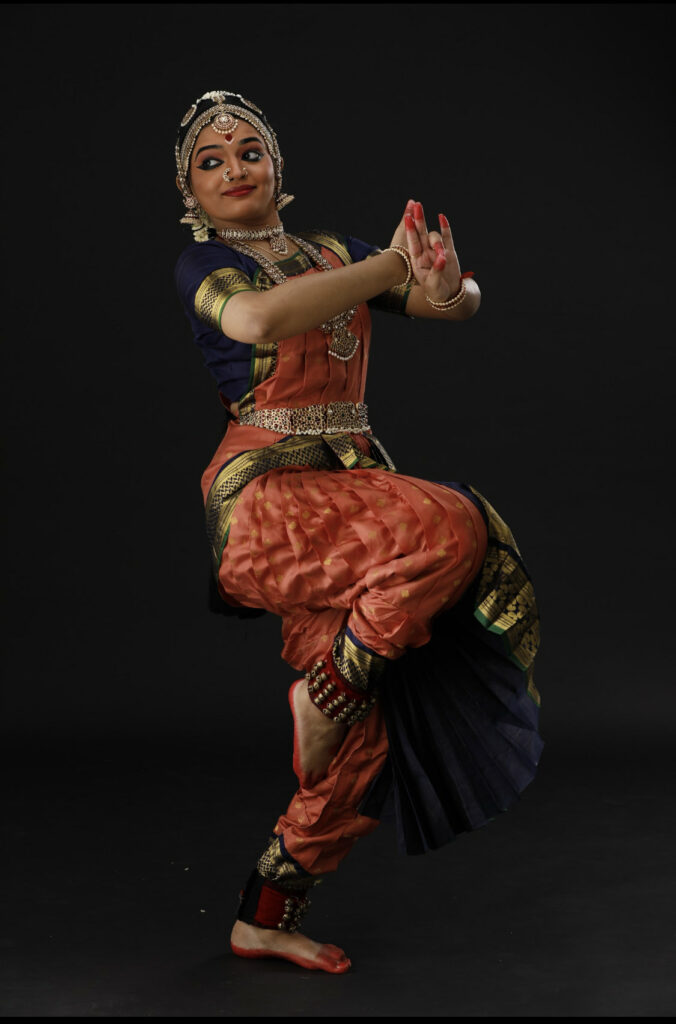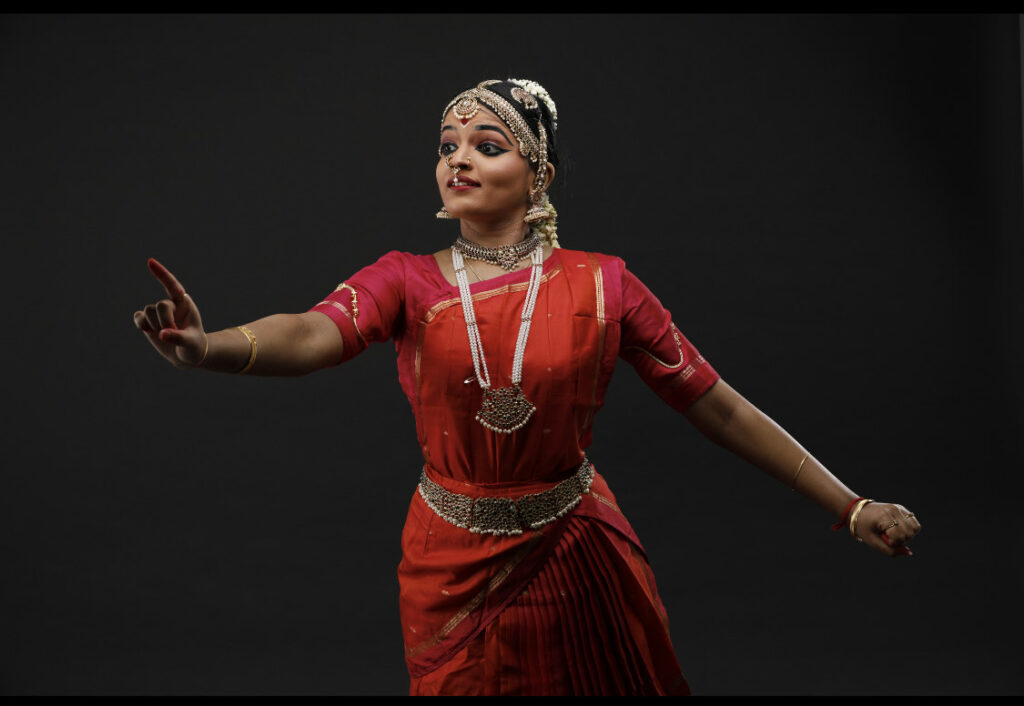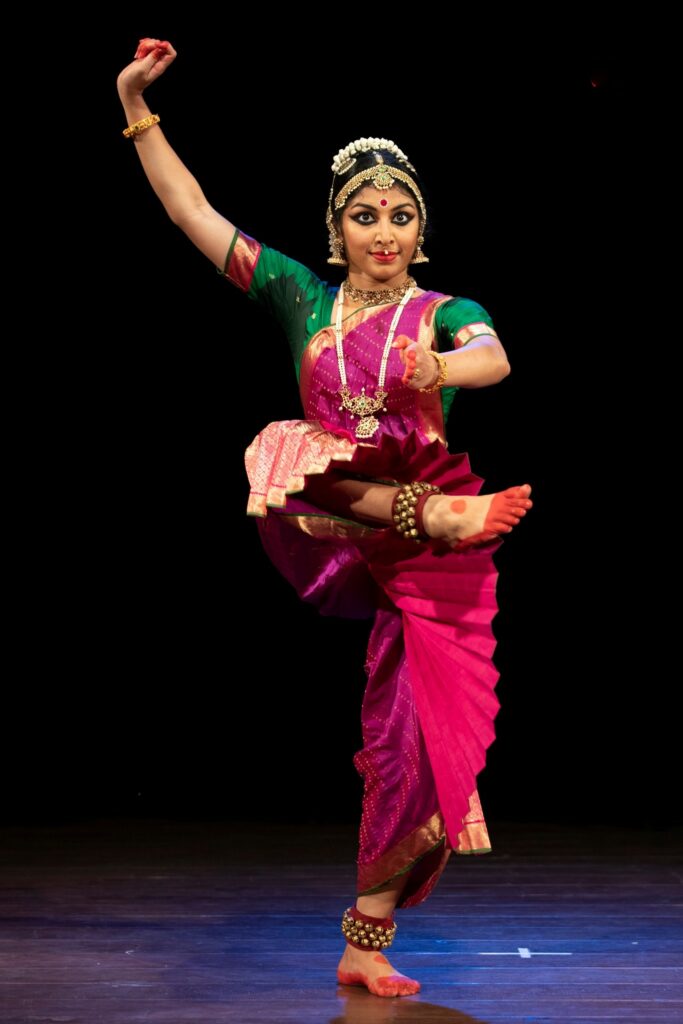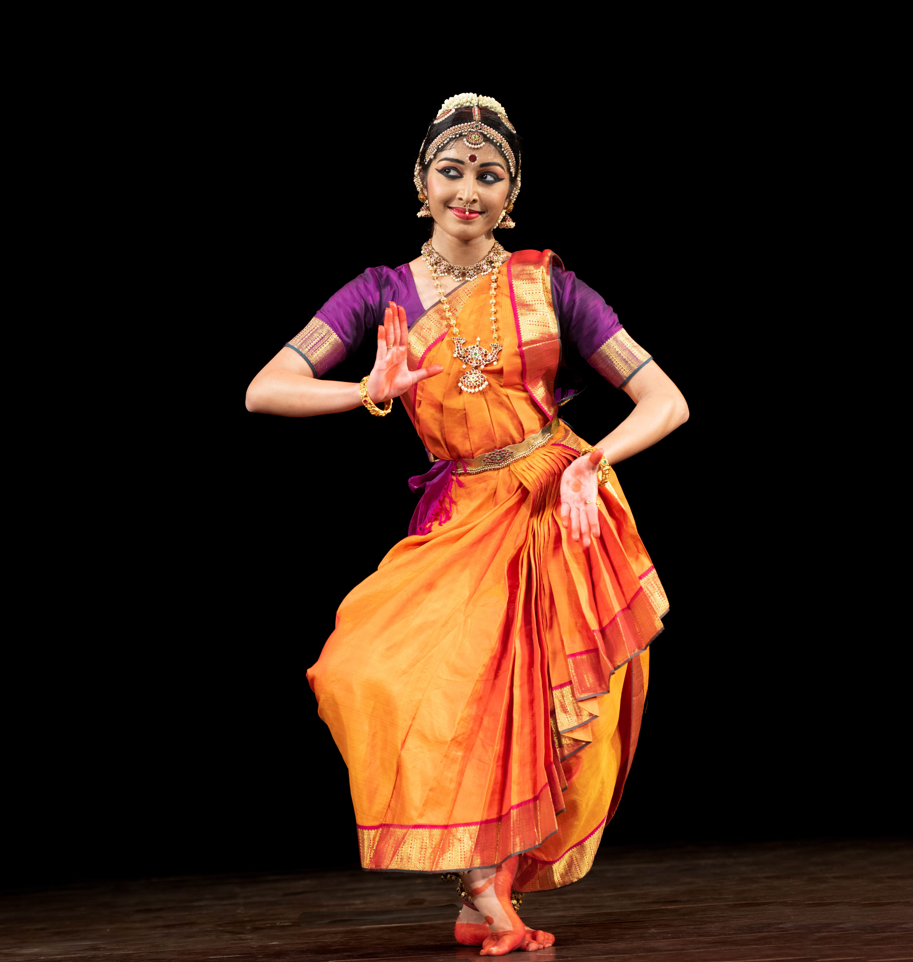Sharing Notes from a Production
Dancers Nagalakshmi from Singapore and Apeksha Kamath from Bangalore share common dance experiences and memories.
Nagalakshmi and Apeksha had the privilege of sharing energies recently for Apsaras Arts’ production Arisi: Rice, which premiered in Singapore at the Esplanade- Theatres on the Bay in November 2022.
That, needless to say, became the starting point of their conversation. They began their talk reminiscing their experiences on working for this magnum opus of a production. Apeksha travelled from India to Singapore to work in this production and she acknowledged that this overseas experience, working and dancing with dancers from across cultures was a once-in-a- lifetime kind of experience. She also praised Apsaras Arts’ company organisers and the dance team for taking care of her needs and she didn’t have to worry about anything; her sole purpose was to dance, which she enjoyed a lot.




When asked about her experiences of working with other dancers from India, Nagalaskhmi said that this was one of the biggest groups that she has worked with and she felt very comfortable right from day one. They hit it off together from the start. Nagalakshmi acknowledged that the company dancers learnt a lot from the dancers from India and also the Balinese dancers too. This led to the two discussing the similarities of Bharatanatyam and Kechak dances.
Nagalashmi then posed an interesting question to Apeksha about the cultural differences in India and Singapore. Apeksha said that she didn’t find much difference based on the time spent with dancers in Singapore and those in India, as they were all fully engaged and discussing dance, full time. “I was very much at home,” said Apeksha, “Although I haven’t stayed long enough to be able to comment on cultural differences.”
Apeksha also mentioned she is a fan of SIngapore as they (four dancers from India) loved the city. She was in awe of how safe the city is, even at 11:30pm and how they could all venture out carefree.
When Nagalaskshmi asked Apeksha about the most challenging part of working for Arisi, Apeksha conceded that surprisingly it was not the dancing part but about figuring out seven hours of sleep, not because they didn’t have the time but because of the adrenaline rush and the late night coffee and conversations that kept them awake and invigorated. “I’d say they have been some of the most enjoyable days of my life,” Apeksha said.
Apeksha asked Nagalakshmi about how different it was for her working on Arisi compared to other productions of Apsaras Arts. Nagalakshmi replied that her first work with Apsaras Arts was Amara, which was a digital recording. Then came Nirmanika where she worked with dancers from Singapore. “Arisi was a huge production with dancers from India and Bali,” said Nagalakshmi, “And I learnt so much about Balinese dance, how similar it is to Bharatanatyam and their dances in Arisi were mesmerizing, packed with energy.”
This led Nagalakshmi to her next question for Apeksha about how she learnt the entire dance in such a short span of time. The Singapore dancers had learnt it earlier but the Indian dancers had to catch up pretty quickly. “I was initially not sure of which style to follow,” Apeksha said, “As there were four dancers from India, and all four have different gurus and the style of dancing of the Singapore dancers was also quite different. It was a little hard and we didn’t yet have a clear picture of the whole production.So we initially learnt only our specific sections and we knew that once we’d reach Singapore, everything would fall in place.” And it did! All’s well that ends well!









